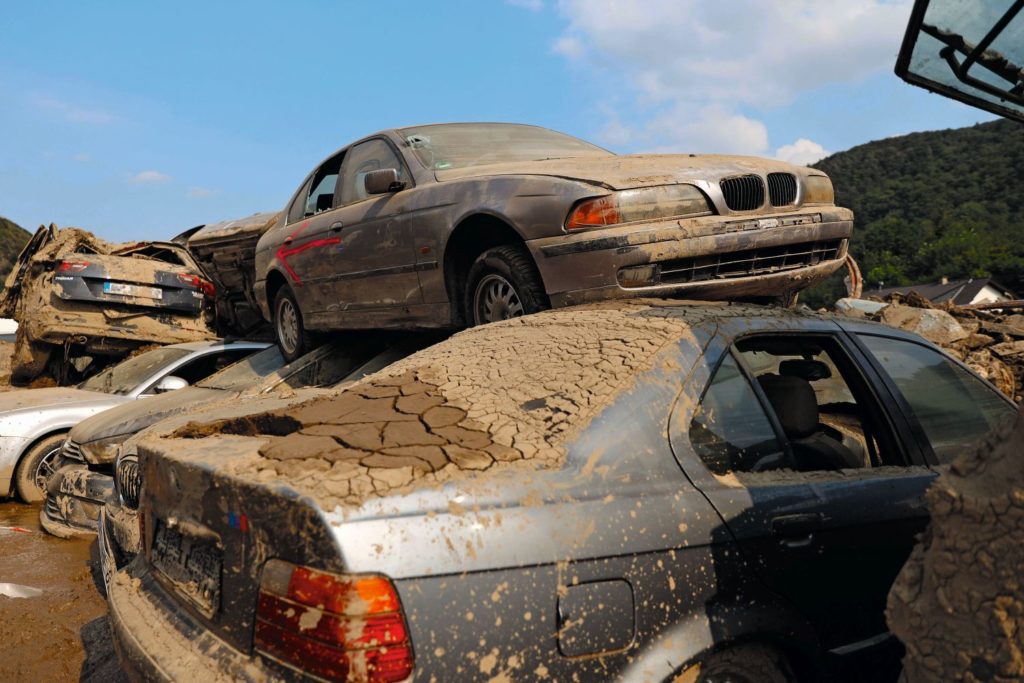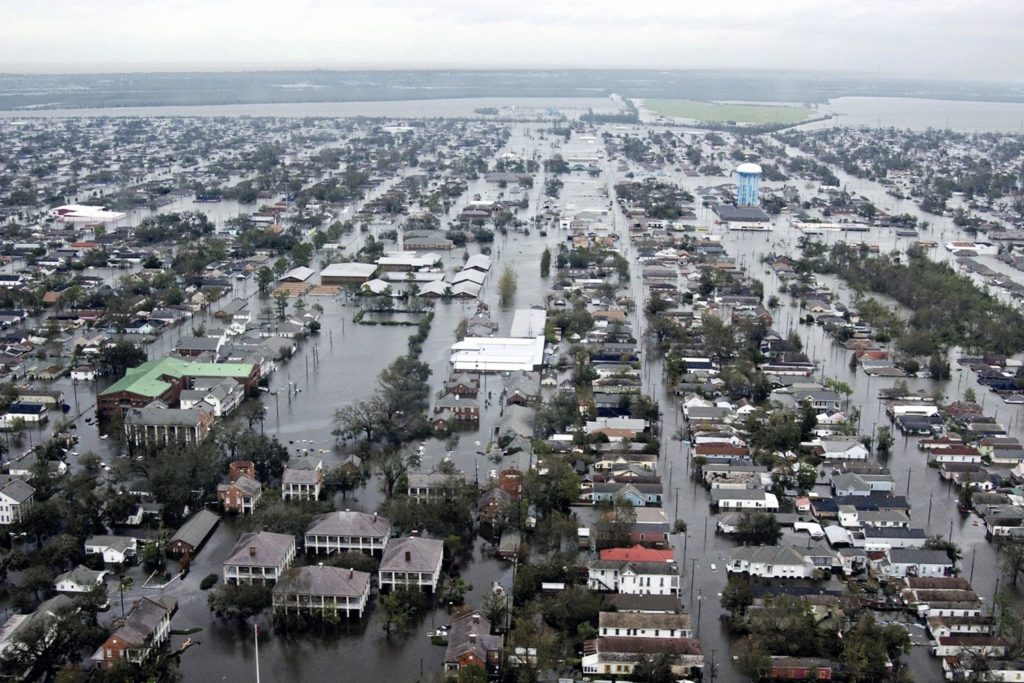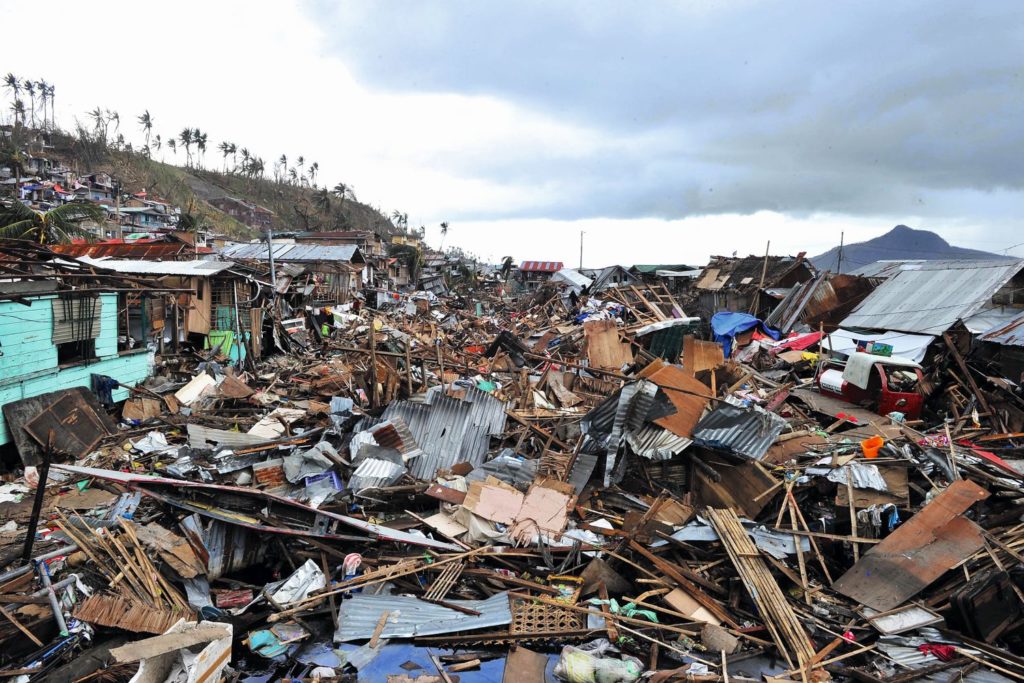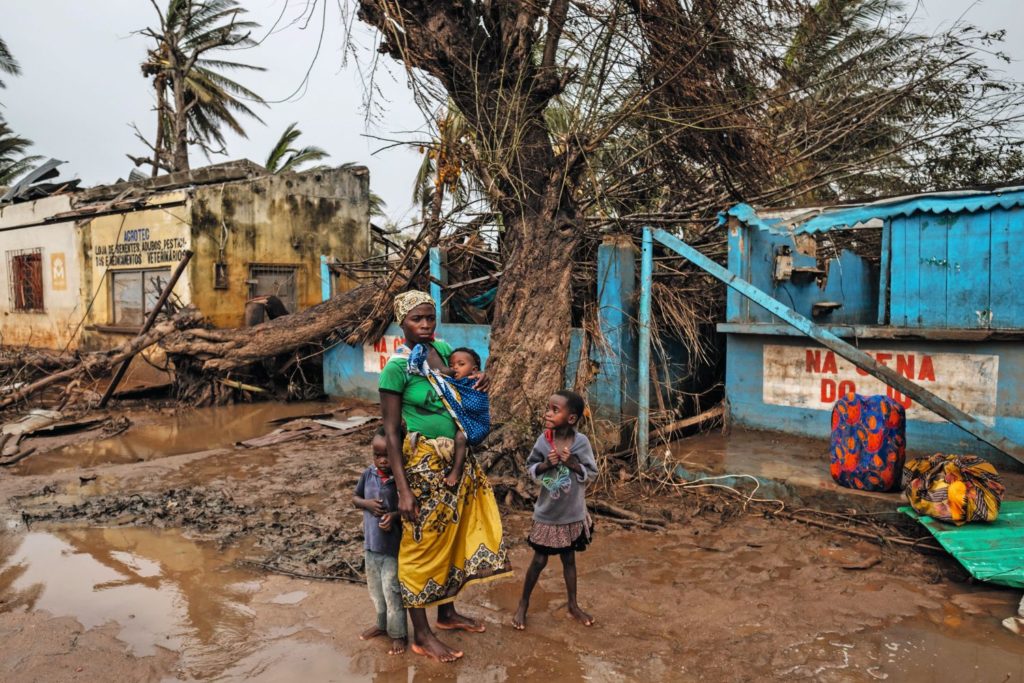Risk Management in Times of Climate Change
Author: Hannes Rügheimer
Climate change isn’t without consequences. Individuals, companies, and countries are called upon to take preventive action, but also to respond to immediate consequences.
The months-long forest and bush fires that ravaged Australia in late 2019 didn’t just kill 33 people and over a billion animals, as well as destroy around 3,000 homes. According to reinsurance company Munich Re, they also caused insurance losses of around 2 billion US-dollars, as well as an unquantifiable amount of uninsured damage. The unprecedented heat wave that hit the USA and Canada in the summer of 2021, with temperatures reaching almost 50 degrees Celsius, cost well over a thousand lives – in the Canadian province of British Columbia alone, more than 700 people died in connection with the record temperatures.
There are no firm numbers on the economic impact on private households and businesses, but they’re likely to be considerable as well. According to the European Forest Fire Information System, the mid-2021 wildfires in Greece destroyed more than 1,100 square kilometers of forest and cultivated land. Estimates put the damage at a minimum of 700 million euros – the Greek government issued a supplementary budget of 500 million to fund emergency aid for the injured.
After the flood disaster that devastated several villages in the Ahr valley in Germany in July 2021, the number of victims continues to rise. At least 135 deaths are considered certain, with hundreds injured, and people still missing. Again, there is no conclusive figure on the total economic damage, but the magnitude is easy to imagine: The district of Ahrweiler reported that the damage to its municipal buildings alone amounted to around 3.7 billion euros.
Climate change contributes to extreme weather events
These numbers make one thing clear. Extreme weather events, which have increased in both frequency and intensity in recent years, cost lives and cause ever greater economic damage. Climate researchers emphasize that there’s a direct link between climate change and the frequency of storms, droughts, fires, and floods across the globe. Both the probability and intensity of these – by definition unusual – events have increased significantly. “What’s happening now is what we scientists have always warned against,” says Prof. Dr. Mojib Latif, President of the German Club of Rome Society and Head of the Maritime Meteorology Research Unit at the Helmholtz Center for Ocean Research Kiel (Germany). He accuses politicians, as well as population and companies, of not taking the warnings of the last twenty to thirty years seriously enough.
Increasing intensity and probability
The World Weather Attribution (WWA) Initiative is an association of international scientists who investigate the correlation between climate change and extreme weather events. In so-called attribution studies, they have proven that the Australian forest and bush fires, for example, were partly caused by climate change. Even though some of their calculations have a wide range of variation, the study provides impressive numbers: For example, the WWA concludes that global climate change increased the probability of recent heavy rainfall events in Germany, Belgium, the Netherlands, and Luxembourg by a factor between 1.2 and 9. The intensity of extreme precipitation has increased by 3 to 19 percent.
“We still think that climate change will happen sometime in the future. We’re only slowly becoming aware that it’s already here,” says Prof. Dr. Maja Göpel, Secretary General of the German Advisory Council on Global Change and co-founder of Scientists for Future. She says that the difference between dealing with climate change and the coronavirus pandemic, for example, has to do with the different timeframes of these events: With Covid-19, there were often only a few weeks between the decision to take action and the visibility of its effects. “With climate change, we have much longer and often delayed effects.” But these don’t fit with policymakers’ focus on short-term successes, or with modern humans’ ingrained expectation of seeing comparatively short-term effects of their own efforts.
The decisive 1.5-degree target
However, perceptions are changing significantly. This also applies to the 1.5-degree goal that has been emphatically demanded by virtually all climate researchers, the Intergovernmental Panel on Climate Change (IPCC), and many other institutions. The commitment, which was laid down by the signatory states at the Paris Climate Conference back in 2015, calls for global warming to be limited to well below two degrees Celsius and, if possible, below 1.5 degrees Celsius by the year 2100. The increase refers to that since the beginning of industrialization around the year 1850. If this climate target has so far been thought of as theoretical and long-term by politicians, the population, and many companies, then the already tangible effects underline its urgency: The increase currently lies at just over one degree. If this value alone leads to the consequences that are now perceptible to everyone, it quickly becomes clear that they will again increase significantly with 1.5 degrees or even 2 degrees more. It’s hard to imagine a world 2.7 to 4.7 degrees warmer, but without more consistent countermeasures, it’s heading towards that very scenario. If this development were to occur, climate researchers such as Prof. Göpel and Prof. Latif bluntly describe the possible consequences as catastrophic.


“The world needs to wake up to the looming threat we face as a species. To even have a chance of limiting global warming to 1.5 degrees, we only have eight more years to nearly halve greenhouse gas emissions,” says Inger Andersen, executive director of the U.N. Environment Programme (Unep). However, with current national climate protection plans, greenhouse gas emissions will only be reduced by 7.5 percent by 2030. To limit global warming to 1.5 degrees, a reduction of 55 percent is necessary – the current reductions would have to be increased approximately sevenfold. Even the 2-degree target would require a fourfold or 30 percent reduction, according to Inger Andersen.
Better preparation for risks too late to avert
But experts also draw attention to another issue: In addition to avoiding much worse consequences in the future, adaptation to already occurring, short-term irreversible consequences has to be part of the plan. The IPCC takes this fact into account with its organizational structure: Its Working Group I deals with the climatic change processes themselves and possible future climatic scenarios. Working Group II concentrates on impact research, while Working Group III focuses on measures to mitigate global warming and prevent its worst effects. Prof. Maarten van Aalst teaches and conducts research at the University of Twente in the Netherlands. He’s also responsible for risk management in regard to climate change at the International Red Cross and works in the IPCC as coordinating lead author in Working Group II – in other words, he’s an expert in dealing with the consequences of climate change. In an interview with DEKRA solutions, he emphasizes that the consequences of climate change differ significantly depending on location. There are no simple answers – even if the world becomes drier on average, extreme precipitation and resulting floods can be expected locally. Global warming can nevertheless lead to colder winters with snow chaos. Permanent rain here, water shortages there. The nowadays widely developed and highly differentiated climate models explain these supposed contrasts in a comprehensible way.
Organizations must assess their risk
According to Prof. van Aalst, considering the individual climate risks of companies also depends on the industry, business model, supply chains, and many other aspects. But there’s no question in his mind that companies of all sizes need to include the consequences of climate change in general, and of possible future extreme weather events in particular, in their risk calculations and security strategies. “In doing so, we need to prepare for events with low frequency but high intensity. I fear that even the rich countries of the world have not yet grasped this.” At the same time, he gives a sense of the complexity of these issues. Often, for example, convenient coastal locations conflict with higher resilience to floods or storms. Extreme heat presents companies with the challenge of protecting their employees outside the corporate building, while at the same time designing the corporate headquarters to be energy efficient and heat resistant.
Crisis prevention through top-quality analysis
But how can companies take concrete action to arm themselves against the complex risks posed by climate change? David Salmon, Head of Strategic Development and Technical Service Manager for Service Division Audit at DEKRA, has the assessment and is convinced: “Risk management is a task that must be anchored at board level or with management. This is where an understanding must develop of the range of risks the company faces and what an appropriate response looks like when relevant scenarios occur.” To provide its customers with concrete support in this task, DEKRA Service Division Audit has developed targeted tools for risk assessment and mitigation.
In any case, there’s no alternative for both individuals and organizations but to prepare for the inevitable consequences of climate change. Reducing greenhouse gas emissions is one side of the equation – preparing for extreme weather events and their impact on business processes and supply chains is the other. Past experience isn’t a good guide for preparing for this future, emphasizes Prof. van Aalst: “We need to prepare for threats we’ve never seen before. We need to be ready for more nasty surprises.”
The DEKRA BRIA
To help companies better prepare for unexpected loss events, DEKRA has developed the cross-industry self-assessment “Business Resilience Impact Assessment”, or BRIA for short. The tool is based on a questionnaire intended as a quick start to resilient risk and continuity management, and is based on relevant standards such as ISO 22301 (Business Continuity Management), ISO 31000 (Risk Management, Finance, Supply Chain), ISO 27001 (Information Security), ISO 37301 (Compliance Management), or ISO 45001 (Occupational Health and Safety).
Find more details here.
David Salmon, Head of Strategic Development and Technical Service Manager for Service Division Audit at DEKRA, helped develop the assessment. He emphasizes: “Future viability comes from crisis prevention, namely preparing for conceivable risk situations with appropriate standards and procedures. The quality and efficiency of a business impact analysis are significantly influenced by how completely and critically companies survey their process risks.” It’s particularly effective, he says, if the almost unthinkable is thought of and success-critical resources are then put in relation to these scenarios.
The assessment starts with a catalog of 40 expert questions that help determine the different levels of maturity in the operating processes in a transparent and comprehensible way. This criteria catalog is free of charge and only available at DEKRA. In the second step, DEKRA experts evaluate the answers and the determined maturity levels. They then identify optimization potential and best practices that can be implemented in operations. Costs for the customer only arise at this second stage. The evaluation takes place remotely so that companies can assess their resilience across multiple sites simultaneously.




